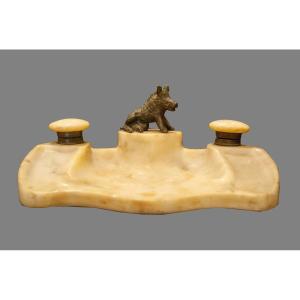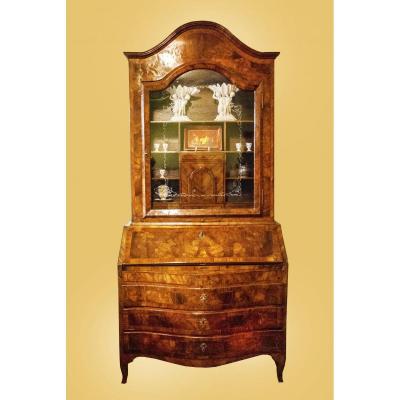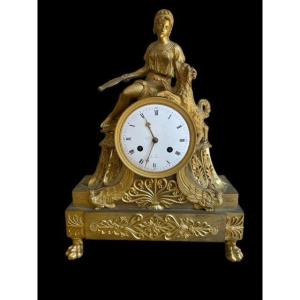Neoclassical/Empire
Mercury-gilt bronze
Measurements: Height 52 cm - Width 35 cm - Depth 14 cm
Magnificent mercury-gilt bronze mantel clock, made in France in the early 19th century, during the period of the Napoleonic Empire. The clock represents Apollo, god of the Sun, Music and Poetry, embodiment of beauty, harmony and classical perfection, recognisable by his youthful and idealised appearance, his elegant pose and the cornucopia he holds in his right hand, symbol of abundance and prosperity.
The young god is depicted in classical garb, with his body in slight contraposition, leaning gracefully against a pedestal housing the clock face, a reminder of the ancient statuary so dear to neoclassical aesthetics. The anatomical rendering and the elegance of the drapery highlight the influence of antique sculpture, a distinctive element of the neoclassical aesthetic.
To his right is a decorated classical urn, a symbol linked to memory and sacredness, probably emphasising the spiritual and immortal aspect of the Apollonian figure. Apollo, besides being the guide of the arts, is above all the god who, every day, drives the Sun chariot across the sky, announcing the dawn and the new day.
This symbolism deeply links it to the concept of time that renews itself. Its presence on a clock is therefore not accidental: it embodies the perpetual cycle of hours and the light that marks the becoming of the day, uniting beauty, cosmic order and temporal measurement in a single powerful allegory. The clock is therefore configured not only as an art object, but also as an allegory of beauty and the passage of time, in an eternal balance. The circular dial in white enamel has black Roman numerals for the hours; in the lower part you can read the reference Aug.te Marchand / Rue Richelieu N. 59. The decoration at the base of the dial features a refined palmette frieze, typical of the Empire style. The base, also in gilded bronze, is finely adorned with vegetal and geometric motifs, consistent with the style of the period. The clock has a wire suspension mechanism (suspension à fil), with weekly winding, complete with pendulum and period key.






































 Le Magazine de PROANTIC
Le Magazine de PROANTIC TRÉSORS Magazine
TRÉSORS Magazine Rivista Artiquariato
Rivista Artiquariato